For almost a decade, projector phones have tried to entice consumers with their convenience as media machines. While these devices are alluring, they've never really taken off with mainstream success. The latest effort, Moviphone, sounds tempting if you watch a lot of films and TV on your smartphone, but is it good enough to be your daily driver?
Throwing a pico projector inside a mobile phone was a hot topic back in 2006 and 2007, but the US didn't actually see one until 2009 when the Logic Bolt V1.0 was released. While it didn't have the best specs compared to other phones that year, it did have a built-in 10 lumens projector for 640 x 480 video. Yet, it's likely you know nothing about this "revolutionary" device.
Since then, over 30 projector phones have been released. While the US only saw a handful of them, like Samsung's Galaxy Beam2 and LG's eXpo, prototypes have been popping up more in recent years from companies such as Akyumen and Lenovo.
While none of the projector phones released have made any significant impact on the market, some manufacturers have found better success with accessories. Motorolla is one, with projector attachments for its Moto Z devices, which have good ratings online and sometimes come paired with a new phone.
Projector attachments seem to work better since you don't have to settle for a crappy phone just for a gimmick you might only use sometimes. So why are companies continuing to try their hands at phones with projectors built-in when competition between juggernauts such as Google, Apple, LG, OnePlus, and Samsung tend to focus more on broad-appeal concepts like cameras, security, and displays?
The niche market of people wanting to play videos on any wall they come across or project photos larger than life is still very appealing to manufacturers, and if they can figure out the right formula, they might just succeed in transitioning into mass appeal to compete against iPhones and Galaxy devices. But they're not there yet, and these are some of the factors hindering projector phones from holding their own in the smartphone arms race.
1. They Can't Beat Flagships for Day-to-Day Use
Moviphone might ship with internals that rocket above the projector phone competition, but it just can't compare to other major flagships. That's not to say the Moviphone doesn't impress in some areas: it has a respectable 5.5" 1080p LCD display, with a massive 4,000 mAh battery. And, of course, it's built with a pico projector. A cool $1,000 won't get you that last one on the iPhone X.
While those specs are great, they just can't compete with the current competition. Many smartphones today ship with 1440p displays, more still with OLED. Why buy a smartphone specifically for projecting movies or photos when other non-projector phones look way better in the palm of your hand?
Even those with displays matching the Moviphone outclass it in terms of pure power — the Moviphone struggles with a 1.5 GHz quad-core CPU, while the standard SoC on most Android phones is the Snapdragon 835, which provides eight-cores of 2.35 GHz processing. And, yes, while the Moviphone costs less than many leading smartphones at only $599, the OnePlus 5T is even cheaper, and dramatically outperforms the Moviphone.
It's just difficult to justify buying a Moviphone over the lineup of great smartphones out there when it doesn't quite reach the standards currently set. That's always been the story for projector phones. The Samsung Galaxy Beam2 shipped with a 480p display and a quad-core 1.2 GHz CPU, while the Galaxy S5, released earlier that same year, featured a 1080p AMOLED display with a quad-core 2.5 GHz CPU.
A projector that you will only occasionally use should not be the sole driving decision in what phone you buy, and manufacturers making projector phones just haven't realized that yet.
2. Connectivity Suffers
No matter how good of a projector an OEM manages to build into a smartphone, they still need to connect to a cellular network as well as any other smartphone. Unfortunately, it doesn't seem like Moviphone accomplishes this.
That's not to say Moviphone is incompatible with carriers — this discussion seems to invite the idea that the phone works with T-Mobile and AT&T the best, although it appears it does not work with Verizon, with no mention of Sprint. It seems the Moviphone is not designed with network connectivity in mind and is more of an afterthought to the whole process (you wouldn't see a debate on whether certain carriers even work with your Galaxy or Pixel 2).
Building off that, in its initial stages, Moviphone does not appear to be Google certified, meaning users cannot access the Google Play Store to download apps, media, and games. While the phone may have been granted certification after the time of this writing, that's discouraging for users who want to buy projector phones like this as early as possible.
3. You Can't Multitask When You're Projecting
Let's say you want to screen a movie for your friends. Well, what happens when your mom texts you halfway through or you remember you need to write that personal email to your boss? You can't just allow the movie to continue as normal while you use the phone however you wish — whatever you do on the phone is going to be projected for the world to see. Not fun.
But, let's pretend that you can multitask with a projector phone (although there is no evidence that Moviphone or any other phone allows you to do this). Even if you could enable your movie to play while you text away, how are you going to do that without shaking or moving the projection? It's either impossible, or extraordinarily difficult. Even less fun.
4. Limited Placement Freedom
Look, in the proper situation, a projector phone's image can be nicely centered and sized for the optimal viewing experience. However, you won't always have the tools necessary to pull this off. If you're in bed, outside, anywhere other than a flat surface, you won't be able to recreate the ideal setting for projection easily.
With a normal phone, you can easily and naturally find the perfect situation for watching your content. You can still do that with the Moviphone's display, but, considering you bought it for its projection ability and skipped phones with better displays to do so, you'll probably just be thinking about that the entire time anyway.
5. Sound Quality Can't Compete
Sound is just as important to the overall viewing experience as picture quality. As dim as the projection may be on the Moviphone, no one will get into a movie with the soundtrack spewing from a tiny smartphone speaker.
If you wanted to screen something for multiple people using the Moviphone, you would absolutely need to connect an external speaker. While it's refreshing to see Moviphone include a headphone jack for wired speakers, if you need to go to all this trouble in setting up a viewing experience, you might as well go with a smartphone that has sound in mind.
Consider the Razer Phone and its dual front-facing speakers, or many of the dual-speaker phones of 2017 like the iPhone X, iPhone 8 and 8 Plus, Google Pixel 2 and Pixel 2 XL, HTC U 11, and more.
- Don't Miss: The Top 4 Phones for Music Lovers & Audiophiles
6. They're Still Not Bright Enough
The one advantage projector phones have over all other smartphones is in their name — these phones can beam their content for a small crowd to see. It's a fantastic idea, but ideas alone don't sell phones. The projection has to be good in order to entice buyers and keep them buying. And, sadly, it just isn't.
Take the Moviphone, which, with its 1280 x 720 resolution and 50 lumens bulb, has the best projector on a smartphone yet. The problem is that 50 lumens isn't that bright. The average affordable home-theater projector on Amazon ranges anywhere from 1,200 to 3,200 lumens bright. While that's an impossible standard to expect a smartphone to meet, even portable pico projectors can be found at 600 lumens.
It just goes to show how insufficiently bright the Moviphone's projection really is, as well as every other projector phone on the market. Considering the Moviphone is the shining star of projector phones at this point, you can imagine how much more disappointing the projection has been on each preceding device.
We started with 10 lumens in 2009, and now, in 2018, we're at 50. That's a pretty dim improvement.
7. We're Still Waiting for Better Tech
While it is impressive that Moviphone manages to pack a projector into such a tight form factor, the fact is it isn't running the best tech available. We've already covered the brightness issue, but we haven't talked about Moviphone's laser-based LED projector.
LED projectors are not bad, by any means. But there are better projectors out there. DLP projectors can be much brighter and sharper than LED, and while LED is usually the go-to for tiny, pico projectors, DLP projectors are shrinking. In fact, Moviphone claims it is working on a DLP projector phone to be released in the second quarter of this year. That in itself may be worth skipping this current projector phone iteration.
However, the best tech might be even further out. According to CNET, LCoS (liquid crystal on silicon) projectors are the best when it comes to contrast, blacks, and avoiding rainbow artifacts. If you really want a projector phone that lives up to expectations, you might want to wait for this technology to come into play.
It's true technology is always improving, and fast, but in the case of projector phones, waiting for the next big advancement is probably a worthy strategy.
8. There Are Better Ways to Watch Larger Videos
Casting content from our smartphones to our TVs has, in part, eliminated a need for the projector phone. Why go through the trouble of watching a show with your Moviphone's less-than-ideal projector when you could simply cast the content to your TV? It's likely your TV has an optimal speaker situation already, so no need to fumble with your tech when inviting the gang over for Game of Thrones.
While projector phones add a level of convenience in that you can screen your media wherever you may be, casting has become so ubiquitous that you might not even realize the TV you are in front of supports it. While not everyone has Chromecast or an Apple TV, plenty of Smart TVs have screen-sharing built in. Even if you don't have a Smart TV, older tech can help you out, like the PS3's compatibility with Second Screen, which works great for services like Netflix and YouTube.
Sorry, projector phones — as cool as you might be, you have a long way to go to outperform casting.
So What if You Want a Portable Projector?
Look, we're not trying to stomp on your dreams of owning a projector phone. They're definitely cool and will probably turn some heads when you show yours off. But these are just some of the issues plaguing current projector phones. Projector phones can also run pretty hot, are usually heavy and bulky, and aren't waterproof.
Moviphone is certainly an impressive step for projector phones in general (up to six hours of battery life while projecting), although existing tech isn't bad either. The Moto Insta-share Projector for the Z series of Moto phones might be your best bet if you're looking for a better mix of internal specs, for example, although the Moviphone has it beat in resolution (720 vs. 480).
Where you'll really find some improvements are in standalone portable projectors. While you miss the convenience of an all-in-one device, these projectors offer more in terms of tech than a projector phone can at this point. Take the Artlii pico projector, which shines 600 lumens bright. In reward for carrying both a projector and a phone around with you, your projector could be 12 times as bright as the Moviphone or Moto Insta-Share.
But you don't need to commit to purchasing a projector to satisfy your curiosity. You can use a cardboard box to turn your existing smartphone into a projector, and you can even do the same for bigger devices like iPads.
The point is, if you want a projector phone, there's no harm in getting one. But knowing why they haven't really found their groove, and looking into what's on the way, you might find it worth investigating further before you make a decision.
Just updated your iPhone? You'll find new features for Podcasts, News, Books, and TV, as well as important security improvements and fresh wallpapers. Find out what's new and changed on your iPhone with the iOS 17.5 update.





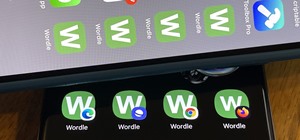


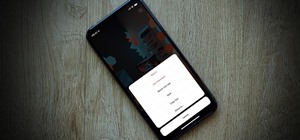
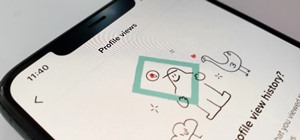
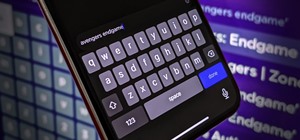


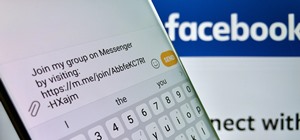
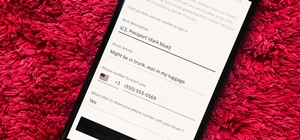
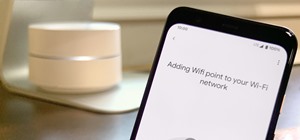
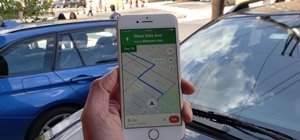
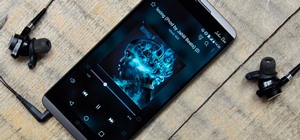



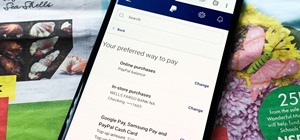
Be the First to Comment
Share Your Thoughts